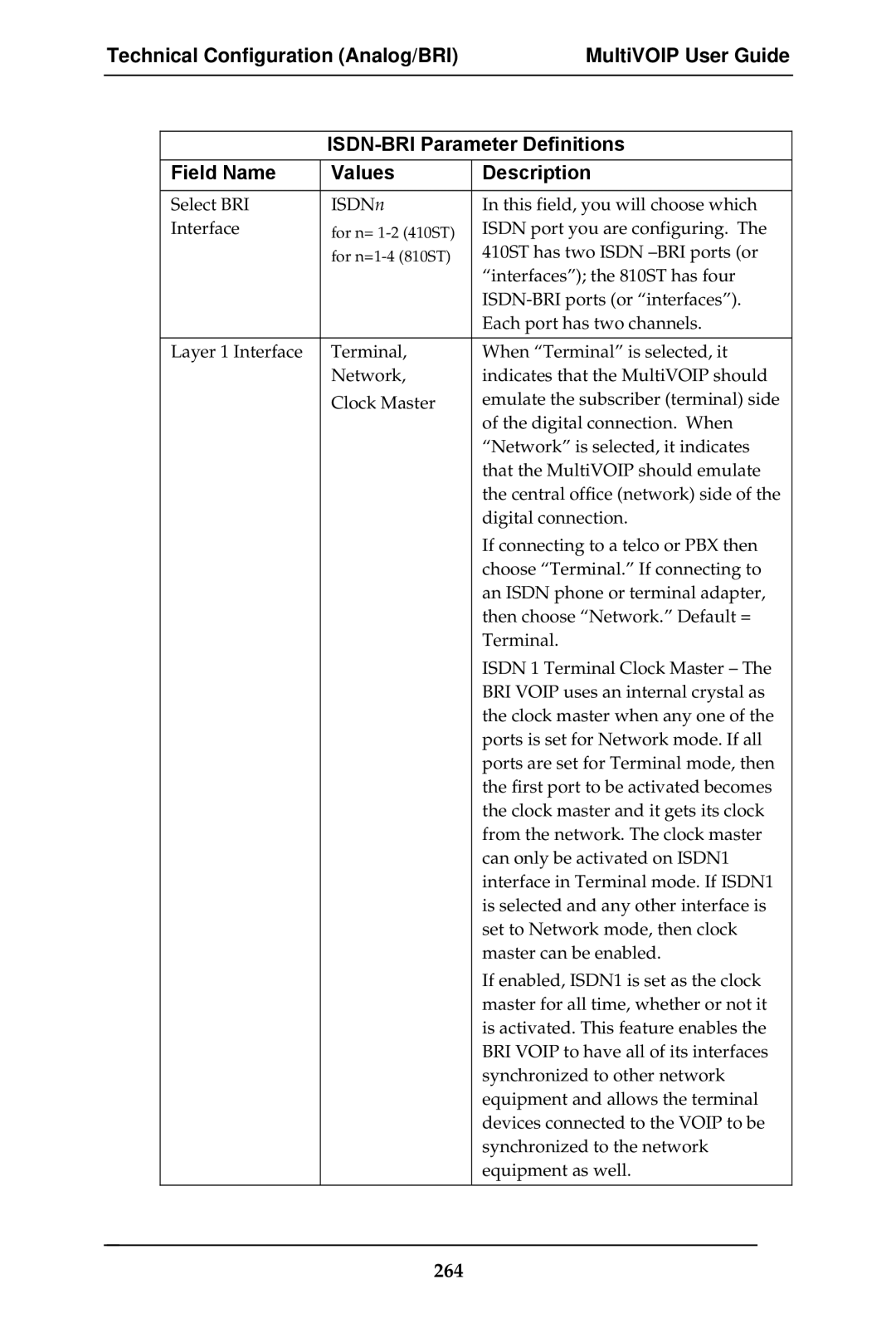
Technical Configuration (Analog/BRI) | MultiVOIP User Guide |
|
|
ISDN-BRI Parameter Definitions
Field Name | Values | Description |
Select BRI | ISDNn | In this field, you will choose which |
Interface | for n= | ISDN port you are configuring. The |
| for | 410ST has two ISDN |
|
| “interfaces”); the 810ST has four |
|
| |
|
| Each port has two channels. |
|
|
|
Layer 1 Interface | Terminal, | When “Terminal” is selected, it |
| Network, | indicates that the MultiVOIP should |
| Clock Master | emulate the subscriber (terminal) side |
|
| of the digital connection. When |
|
| “Network” is selected, it indicates |
|
| that the MultiVOIP should emulate |
|
| the central office (network) side of the |
|
| digital connection. |
|
| If connecting to a telco or PBX then |
|
| choose “Terminal.” If connecting to |
|
| an ISDN phone or terminal adapter, |
|
| then choose “Network.” Default = |
|
| Terminal. |
|
| ISDN 1 Terminal Clock Master – The |
|
| BRI VOIP uses an internal crystal as |
|
| the clock master when any one of the |
|
| ports is set for Network mode. If all |
|
| ports are set for Terminal mode, then |
|
| the first port to be activated becomes |
|
| the clock master and it gets its clock |
|
| from the network. The clock master |
|
| can only be activated on ISDN1 |
|
| interface in Terminal mode. If ISDN1 |
|
| is selected and any other interface is |
|
| set to Network mode, then clock |
|
| master can be enabled. |
|
| If enabled, ISDN1 is set as the clock |
|
| master for all time, whether or not it |
|
| is activated. This feature enables the |
|
| BRI VOIP to have all of its interfaces |
|
| synchronized to other network |
|
| equipment and allows the terminal |
|
| devices connected to the VOIP to be |
|
| synchronized to the network |
|
| equipment as well. |
|
|
|
